Traditional Feel: Experience Authentic Kabuki Music In Tokyo
Join A Unique Event To Learn & Play Traditional Japanese Music
Touch, feel and play kabuki music in a unique cultural event in Tokyo.
“Yo——!”
The chant announces the beginning of the performance; the shamisen sounds gradually fill the room in anticipation. The audience awaits impatiently: it’s everyone’s moment to shine. Here at Traditional Feel: Experience Kabuki Music, every participant has a role to play — under the careful guidance of experienced kabuki musicians.
Kabuki Music: The Essentials
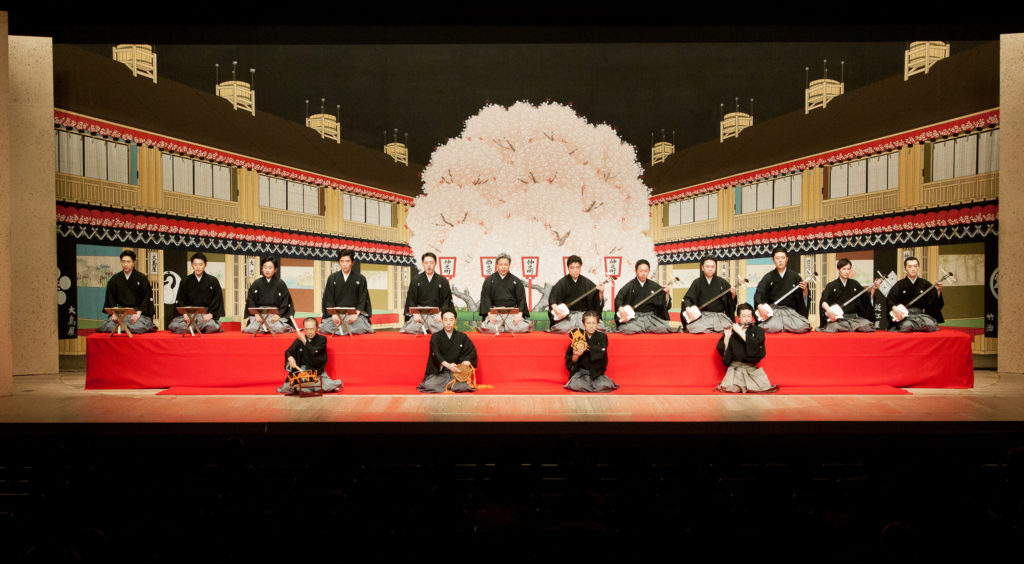
Though most of us are familiar with kabuki, commonly referring to it as “the Japanese theater,” the musical side of it remains—to a large extent—a mystery. Yet, the music carries just as much value as the play, dance, makeup and amazing costumes.
Without going much into details, the kabuki music is largely divided into three main categories: geza-ongaku, played behind the curtains; shosa-ongaku, the main music played on stage in accordance to actors’ performances, and ki & tsuke — distinctive sound effects produced by wooden clappers either striking against each other (ki) or against a wooden board (tsuke) in accordance to the dynamics of the particular scene.
At Traditional Feel: Experience Kabuki Music, every participant has a role to play.
A lead shosa-ongaku performance and the key component of making the stage dramatic and intense, nagauta, (literally, a long song) or “kabuki orchestra,” is an essential part of the entire kabuki experience. Notably developed in the Edo period, nagauta consists of singers, a fue (bamboo flute) and shamisen (three-stringed lute) players, and several types of percussions, including the small taiko and double-faced hourglass-shaped drums called ootsuzumi and kotsuzumi. It is performed by as many as 20 players at once, but without a conductor like an orchestra.
Experiencing nagauta, therefore, is a shortcut to understanding kabuki’s music and the secrets behind it. And now, for the first time (to our knowledge), a special bilingual event is held in Tokyo, offering not only a basic understanding of the key musical components and background, but also a chance to experience the instruments and perform on stage in a true kabuki style.
An Authentic Experience Of Traditional Japan
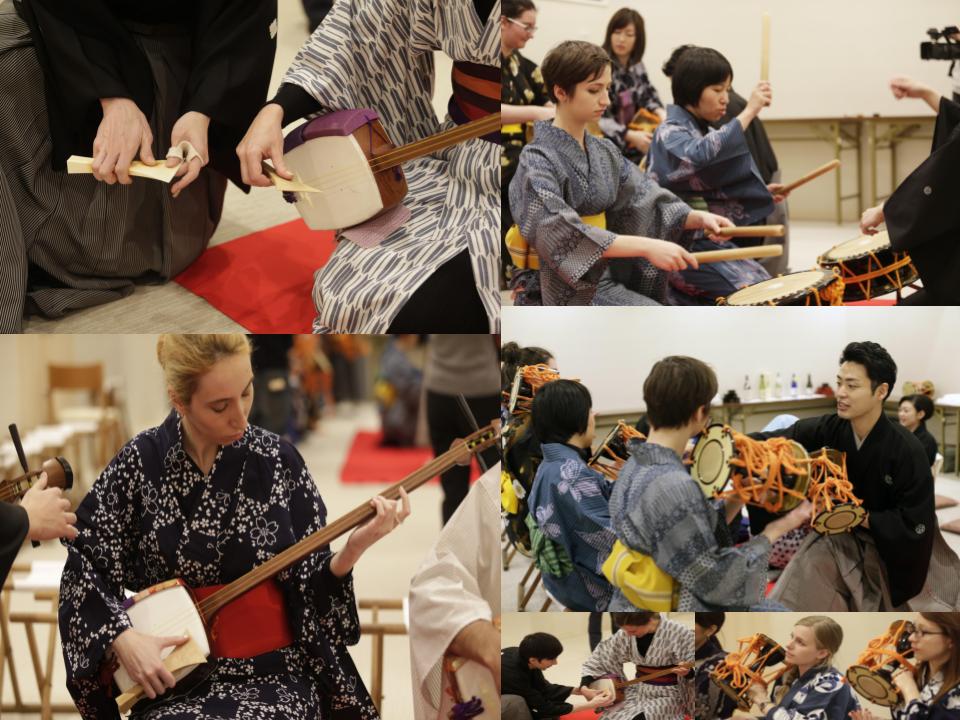
Traditional Feel: Experience Kabuki Music, organized by Geidankyo (The Japan Council of Performers Rights & Performing Arts Organization), is a cultural event that first opened its doors to the public on February 23, attracting an impressive crowd of both curious Japanese and foreign participants. The second installment is scheduled for March 11, allowing those who missed the original one, to catch up.
The two-hour program begins with yukata wearing (optional), followed by an up-close performance by professional kabuki musicians, and a detailed introduction of each instrument used in the nagauta performance. While this is already exciting in itself, the best part of the event is yet to come: you’re guided into trying each instrument, practicing with the artists, and getting ready for being in the spotlight — in an ensemble with the kabuki musicians. Throughout the entire process, each participant is attended by the musicians and bilingual staff who teach step by step the basics of the shamisen, taiko drums, and percussions — so even if you’re by nature inclined to holding musical instruments upside down, you’ll still get there!
Learning From The Best
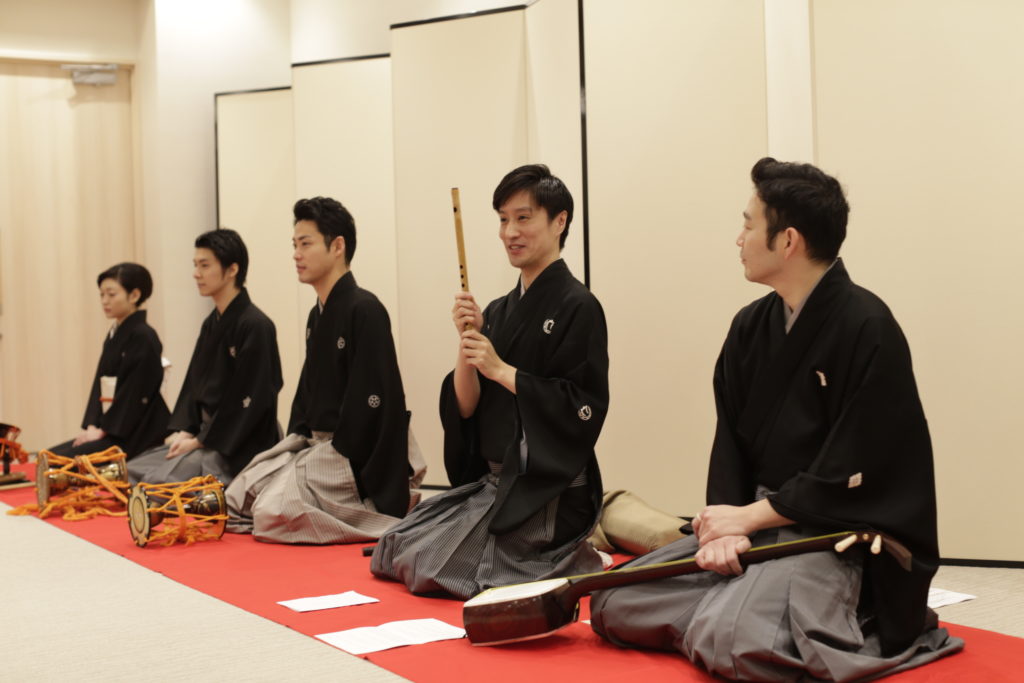
The leading artists (and your teachers on the day) include Katsujuro Kineya (shamisen) and Suiho Tosha (fue) who are renowned not only in the kabuki world, but also in the Japanese showbiz world. Mayu Abe on the taiko drums, is one of the exceptionally rare female taiko drummers: though as of present women are not allowed on the kabuki theatre stage, a handful of strong women who aren’t afraid of breaking barriers, can occasionally be found playing at other theatrical plays and festivals. Abe, a kind and gracious woman, yet fierce on the drums, is one of them.
As part of the event, participants are also invited to freely chat and socialize with all six musicians, as well as obtain their autographs.
Pon, Ta & Ha: Your New Trivia
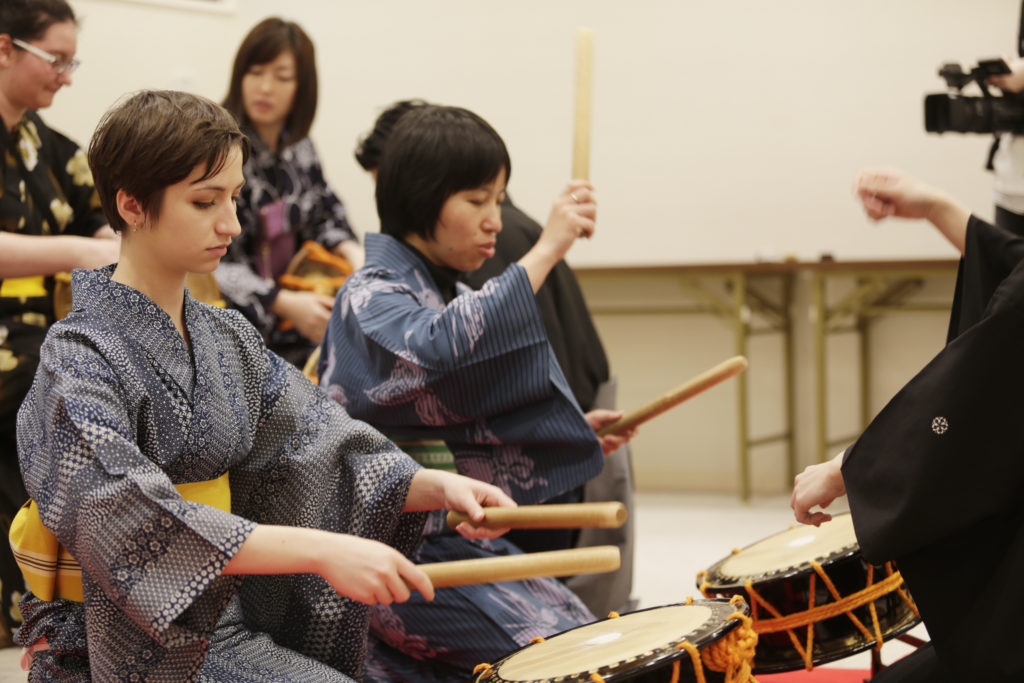
Everything you learn throughout the event is an eye opener: you’ll know why the plectrum used for shamisen is called bachi; why humidity plays an essential role to the sound of kotsuzumi (and why you can see artists breathing into it throughout the performance); or why the ootsuzumi, on the other hand, has to be constantly dry. You’ll also learn that when playing ootsuzumi you need to wear a special finger badge, yubikawa, that is made of nothing but Japanese paper and rice glue: yet, it’s hard as a stone.
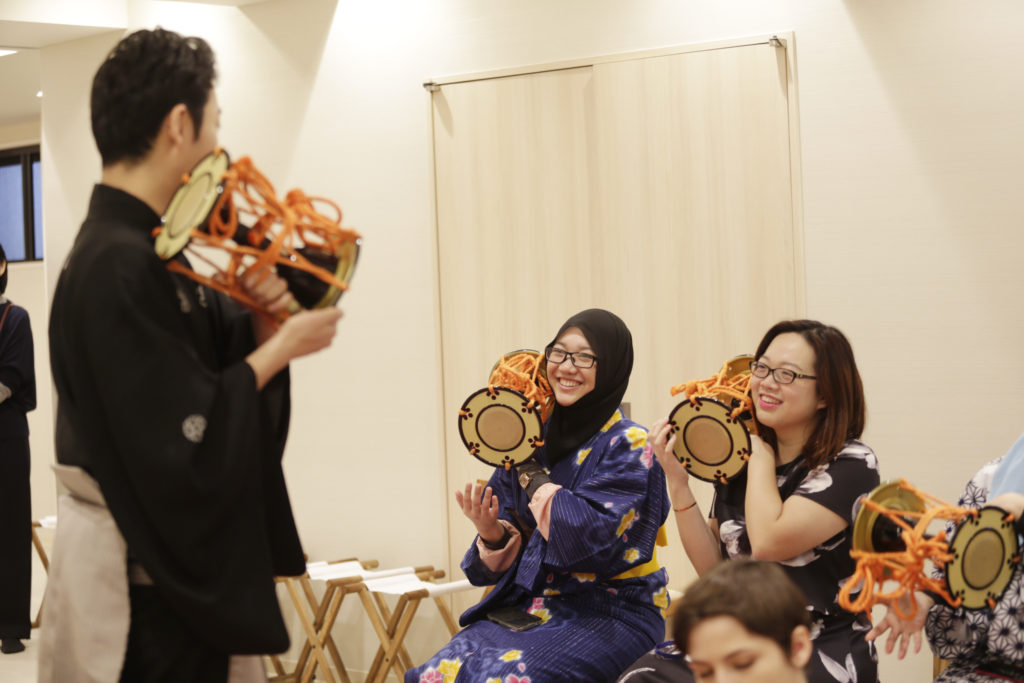
You’ll play the kotsuzumi by squeezing or releasing the ropes that affixes it, to give high or low notes, respectively, while you’re instructed to play it with two words only: pon & ta — and while you may dread it in the beginning, you’ll feel better after learning that all kabuki musicians are taught in the exact same way: “Squeeze the rope and pon! Release and ta!” Ha, on the other hand, stands for beginning and end. If by the end of the day you’ve mastered the pontaha, you’ve mastered it all.
You’ll know why the plectrum used for shamisen is called bachi; why humidity plays an essential role to the sound of kotsuzumi […]; or why the ootsuzumi, on the other hand, has to be constantly dry.
After The Show
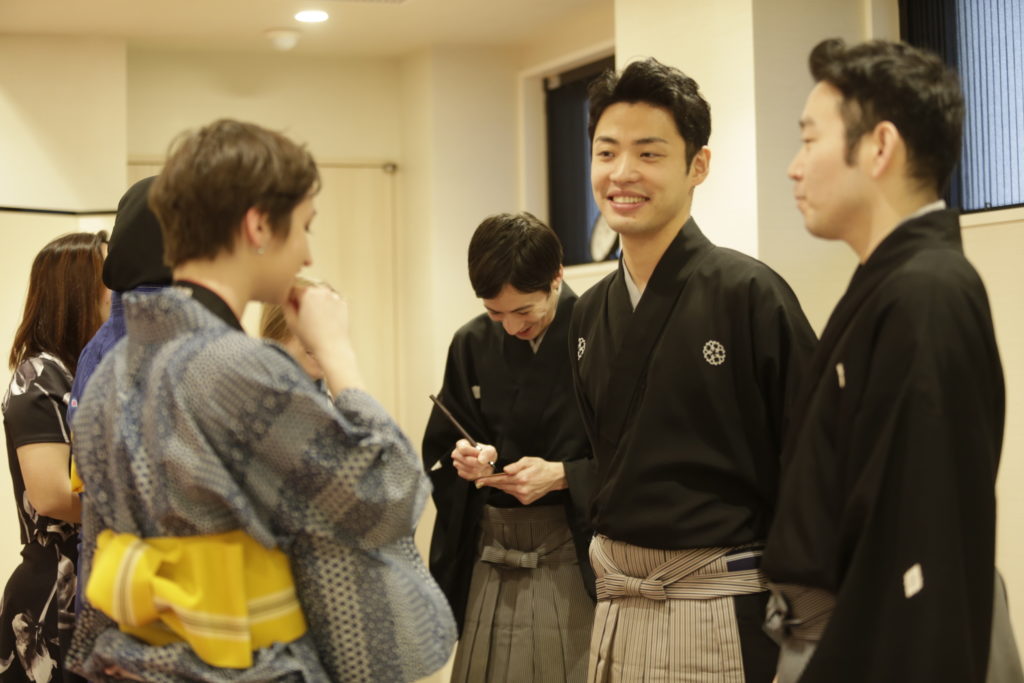
If you missed asking questions during the event, the afterparty gives you plenty of possibilities to catch up. Enjoy a cup of green tea or Japanese sake, and don’t mind if it’s only noontime: it will only help you practice your pontaha better. Have a chat with the musicians, get a souvenir with their handwritten autographs, and socialize with other participants.
Traditional Feel: Experience Kabuki Music is a great opportunity for anyone wanting to experience something brand new in a unique, traditional environment. If that’s your call — hurry up and save the date! Pontaha!
Savvy Exclusive Deal: Post a comment with your answer to “What are the five essential musical instruments that are used in kabuki music?” (that are mentioned in the article). The first 5 people to answer correctly will get a FREE PAIR TICKET to the Traditional Feel: Experience Kabuki Music for this Saturday, March 11 from 10:30 a.m. – 12:30 p.m.
The Deets
When: Sat, March 11, 2017
Time: 10:30 a.m. – 12:30 p.m. or 6 p.m. – 8 p.m.
Where: Geino-Kadensha, 6-12-30, Nishi-Shinjuku, Shinjuku-ku, Tokyo
Cost: ¥6,000, ¥8,000 with yukata experience
To book a spot, click here.
Comments
Leave a Reply
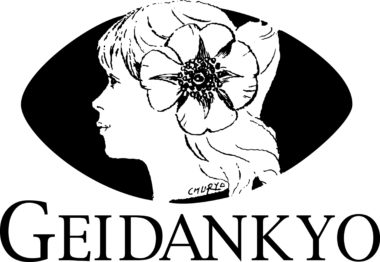
SPONSORED BY GEIDANKYO
Geidankyo (Japan Council of Performers Rights & Performing Arts Organization) is a public interest incorporated association representing performer organizations and their members.











